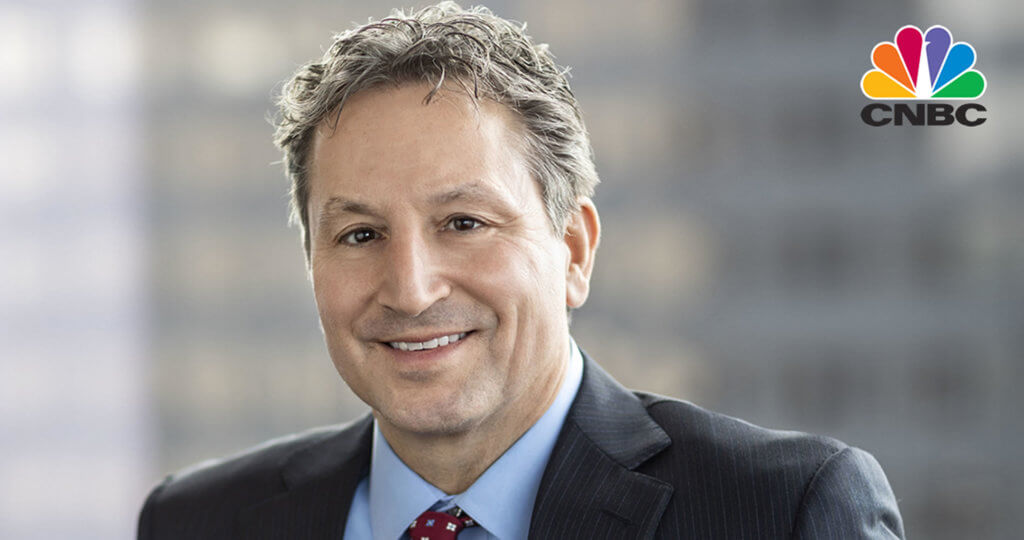Oakmark International Fund – Investor Class
Average Annual Total Returns 03/31/23
Since Inception 09/30/92 8.69%
10-year 5.04%
5-year 1.46%
1-year 5.22%
3-month 13.91%
Expense Ratio: 1.04%
Expense ratios are from the Fund’s most recent prospectus dated January 28, 2023; actual expenses may vary.
Past performance is no guarantee of future results. The performance data quoted represents past performance. Current performance may be lower or higher than the performance data quoted. The investment return and principal value vary so that an investor’s shares when redeemed may be worth more or less than the original cost. To obtain the most recent month-end performance data, view it here.
The Oakmark International Fund (“the Fund”) returned 13.9% for the quarter ended March 31, 2023, compared to the benchmark, the MSCI World ex U.S. Index (net), which returned 8.0% for the same period. In addition, the Fund has returned an average of 8.7% per year since its inception in September 1992, outperforming the MSCI World ex U.S. Index, which has averaged 5.8% per year over the same period. For additional color on our views of the market environment during the most recent quarter, please see David Herro’s quarterly commentary.
Continental (Germany), one of Europe’s largest tire and automotive component manufacturers, was a top contributor to the Fund’s performance for the quarter. Continental released results for 2022 that demonstrated significant progress in its automotive division, which had been experiencing challenging conditions and mixed financial performance. The business grew roughly 13% faster than the light vehicle production business on an organic basis due to a combination of volume and price increases. These price increases were necessary to offset severe material cost inflation, and the automotive division demonstrated a clear return to profitability in the fourth quarter with 2.1% margins. At the same time, additional detail highlighted a strong order intake and encouraging results at growth subsegments of the automotive division. The company’s tires segment, which is by far its largest in terms of earnings (and in terms of value, in our view), produced results at the high end of guidance thanks largely to a 19.3% increase in contribution from pricing and product mix. While ContiTech and free-cash-flow performance came in shy of expectations, we found the overall result to be encouraging. Looking forward, 2023 guidance called for revenue growth well in excess of our forecasts and continued progress in automotive profitability. We spoke with CEO Nikolai Setzer during the quarter and came away with conviction that management is steering Continental in the right direction and that the company’s financial results will improve due to both internal actions and improvements in external conditions relating to supply chain constraints and light vehicle production.
Glencore (Switzerland), one of the world’s largest mining firms, was a notable detractor for the first quarter. The company’s full-year 2022 results were strong in an absolute sense, including an 84% increase in EBIT year over year, but they fell short of market expectations. This shortfall was driven entirely by the industrial business. In contrast, marketing significantly exceeded our expectations and produced adjusted earnings of $6.38 billion, nearly double the high end of Glencore’s long-term guidance for the segment, due to exceptional profitability from the energy segment. The industrial division fell short of our expectations due to a mix of production issues in coal and at two copper assets, Katanga and Mt. Isa, as well as cost inflation related to labor, diesel and explosives. Glencore also announced an incremental $7.1 billion of distributions to shareholders. While a very high number and implied yield, this was actually somewhat lower than had been expected under Glencore’s capital allocation policy due to weaker free-cash generation during 2022 driven by working capital constraints. During a call with management, CEO Gary Nagle revealed that the company sees significant latent potential to double its copper business organically over the next decade via brownfield expansions and an attractive greenfield project in Argentina. Although the company is waiting until the market demands the tons, Glencore is acquiring land, conducting sample testing and doing permitting work to help ensure these projects can be completed within a timely manner once sanctioned. Further, Nagle remains committed to the rundown of Glencore’s coal assets over time in accordance with the company’s strategy, but he reiterated the belief that they should be very strong profit and cash flow contributors for the company due to an attractive cost position and favorable supply/demand dynamics. We continue to believe that Glencore is an attractive holding and that management is committed to delivering value for shareholders.
During the quarter, we sold our positions in Grupo Televisa ADR (Mexico), Philips (Netherlands), Rolls-Royce Holdings (U.K.) and Credit Suisse Group (Switzerland) in favor of names that offer more potential upside in our opinion.
We initiated the below positions during the quarter:
- Eurofins Scientific is a Luxembourg-based laboratory services company with 940 laboratories in 59 countries. We believe Eurofin’s scaled, focused lab testing networks possess superior market positions and high barriers to entry. In our view, the company has best-in-class exposure to secularly growing end markets in pharmaceutical, food and environmental testing. We find the company has an attractive formula of network expansion through both organic and inorganic growth. Finally, we appreciate that Giles Martin, the company’s founder and executive chairman, has a large ownership interest in the company and a strong long-term track record.
- Brenntag is based in Germany and one of the top global chemical distributors. The company is responsible for connecting chemical manufacturers to manufacturer end customers, purchasing larger quantities of chemicals, and re-packing those chemicals for customers. In our view, Brenntag’s position in the specialty chemical distribution market affords the company an attractive opportunity for high growth, serving around 100,000 customers with products from thousands of suppliers. Further, the global chemical distribution market grows faster than the global chemical manufacturing market at a 3-5% compound annual growth rate versus 2-4%. As such, we believe that market leaders, like Brenntag, can grow even faster through consolidation by manufacturers and higher gross margins, making its growth far less cyclical than the underlying chemical markets. We appreciate management’s multi-year plan to reorganize the business structure to align with the distinct needs of specialty and commodity markets, sharpen incentives, increase focus on value-over-volume, and trim Brenntag’s cost structure, which should help the company close its performance deficit while retaining upside optionality, in our view.
Geographically, we ended the quarter with approximately 87.4% of our holdings in Europe and the U.K., 9.6% in Asia, 2.5% in North America (Canada), and 0.5% in Australasia.
We thank you for your continued support.
The securities mentioned above comprise the following preliminary percentages of the Oakmark International Fund’s total net assets as of 03/31/2023: Brenntag 0.2%, Continental 2.5%, Credit Suisse Group 0%, Eurofins Scientific 0.5%, Glencore 1.5%, Grupo Televisa ADR 0%, Philips 0% and Rolls-Royce Holdings 0%. Portfolio holdings are subject to change without notice and are not intended as recommendations of individual stocks.
EBIT is a measure of a firm’s profit that includes all expenses except interest and income tax expenses. It is the difference between operating revenues and operating expenses.
The MSCI World ex U.S. Index (Net) is a free float-adjusted, market capitalization-weighted index that is designed to measure international developed market equity performance, excluding the U.S. The index covers approximately 85% of the free float-adjusted market capitalization in each country. This benchmark calculates reinvested dividends net of withholding taxes. This index is unmanaged and investors cannot invest directly in this index.
On occasion, Harris may determine, based on its analysis of a particular multi-national issuer, that a country classification different from MSCI best reflects the issuer’s country of investment risk. In these instances, reports with country weights and performance attribution will differ from reports using MSCI classifications. Harris uses its own country classifications in its reporting processes, and these classifications are reflected in the included materials.
The Fund’s portfolio tends to be invested in a relatively small number of stocks. As a result, the appreciation or depreciation of any one security held by the Fund will have a greater impact on the Fund’s net asset value than it would if the Fund invested in a larger number of securities. Although that strategy has the potential to generate attractive returns over time, it also increases the Fund’s volatility.
Investing in foreign securities presents risks that in some ways may be greater than U.S. investments. Those risks include: currency fluctuation; different regulation, accounting standards, trading practices and levels of available information; generally higher transaction costs; and political risks.
The information, data, analyses, and opinions presented herein (including current investment themes, the portfolio managers’ research and investment process, and portfolio characteristics) are for informational purposes only and represent the investments and views of the portfolio managers and Harris Associates L.P. as of the date written and are subject to change and may change based on market and other conditions and without notice. This content is not a recommendation of or an offer to buy or sell a security and is not warranted to be correct, complete or accurate.
Certain comments herein are based on current expectations and are considered “forward-looking statements”. These forward looking statements reflect assumptions and analyses made by the portfolio managers and Harris Associates L.P. based on their experience and perception of historical trends, current conditions, expected future developments, and other factors they believe are relevant. Actual future results are subject to a number of investment and other risks and may prove to be different from expectations. Readers are cautioned not to place undue reliance on the forward-looking statements.
All information provided is as of 03/31/2023 unless otherwise specified.






